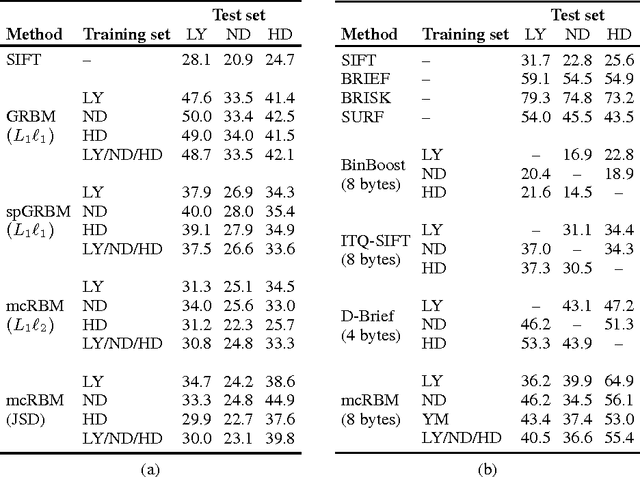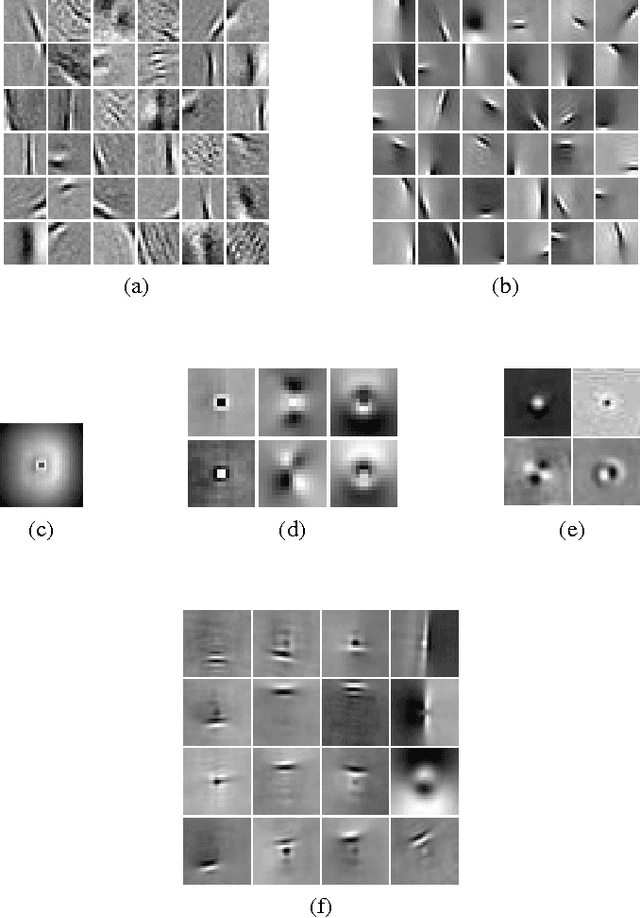Unsupervised Feature Learning for low-level Local Image Descriptors
Paper and Code
Apr 25, 2013


Unsupervised feature learning has shown impressive results for a wide range of input modalities, in particular for object classification tasks in computer vision. Using a large amount of unlabeled data, unsupervised feature learning methods are utilized to construct high-level representations that are discriminative enough for subsequently trained supervised classification algorithms. However, it has never been \emph{quantitatively} investigated yet how well unsupervised learning methods can find \emph{low-level representations} for image patches without any additional supervision. In this paper we examine the performance of pure unsupervised methods on a low-level correspondence task, a problem that is central to many Computer Vision applications. We find that a special type of Restricted Boltzmann Machines (RBMs) performs comparably to hand-crafted descriptors. Additionally, a simple binarization scheme produces compact representations that perform better than several state-of-the-art descriptors.
 Add to Chrome
Add to Chrome Add to Firefox
Add to Firefox Add to Edge
Add to Edge